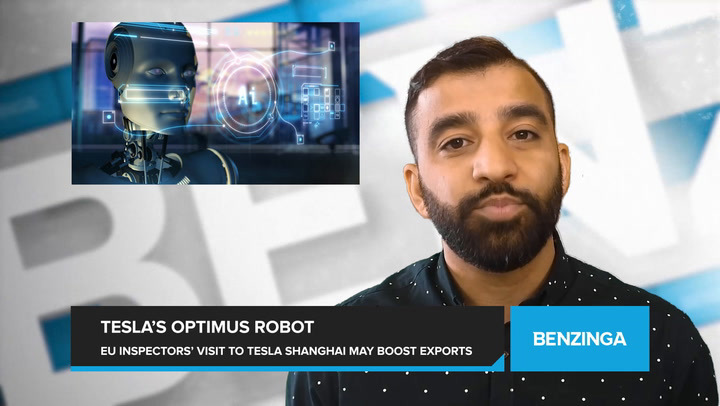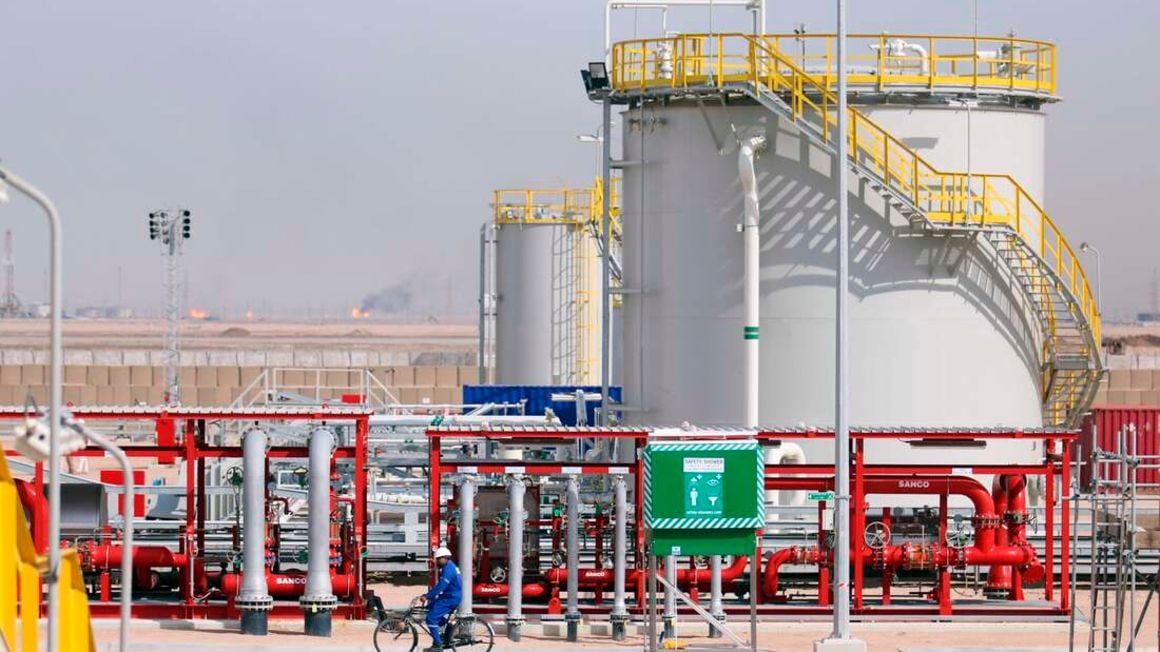Rare Earth Supply Chain Issues Impede Tesla's Optimus Humanoid Robot Development

Table of Contents
The Critical Role of Rare Earth Elements in Robotics
Rare earth elements (REEs) are indispensable components in numerous robotic systems, including Tesla's Optimus. These elements possess unique magnetic and electronic properties, making them crucial for high-performance motors, precise sensors, and other critical components. Without a stable supply of these elements, advancements in robotics, particularly in sophisticated humanoid robots like Optimus, are significantly hampered.
- Neodymium (Nd): A key ingredient in powerful and efficient permanent magnets used in Optimus's motors, enabling the robot's movement and manipulation capabilities. Strong neodymium magnets are essential for achieving the required power density and torque within a compact design.
- Dysprosium (Dy): Crucial for enhancing the temperature stability and magnetic strength of neodymium magnets, ensuring reliable performance even under high operating temperatures. This is especially critical in robotic applications that generate significant heat.
- Praseodymium (Pr): Often used in conjunction with neodymium to improve magnet properties, contributing to the overall efficiency and performance of the robot's actuators.
- Other REEs: Other rare earth elements play roles in various sensors and electronic components, impacting factors like accuracy, sensitivity, and overall functionality of the robot.
The use of REEs translates to:
- Enhanced motor efficiency and power density, leading to more powerful and longer-lasting robot movements.
- Improved sensor accuracy and sensitivity, resulting in better environmental perception and object manipulation.
- Smaller and lighter robotic components, improving overall robot agility and design flexibility.
Current State of the Rare Earth Supply Chain: Bottlenecks and Geopolitical Risks
The global rare earth supply chain is highly concentrated, with China currently dominating the mining and processing of these crucial elements. This geographical concentration creates significant vulnerabilities, particularly concerning geopolitical instability, trade disputes, and environmental regulations. Any disruption in this concentrated supply chain can trigger price volatility and potentially halt production for industries relying on REEs, including robotics.
- Dependence on Specific Regions: The heavy reliance on a single major player like China creates a significant risk of supply disruptions due to political tensions or unexpected events.
- Environmental Regulations and Sustainability Challenges: Stricter environmental regulations regarding REE mining and processing can impact supply, leading to increased costs and potential production slowdowns. Sustainable sourcing practices are also critical for long-term supply chain stability.
- Potential for Price Volatility and Supply Disruptions: The imbalance between supply and demand, combined with geopolitical factors, can lead to substantial price fluctuations, making it difficult for manufacturers like Tesla to accurately predict and budget for REE costs.
Impact of REE Supply Chain Issues on Optimus Development
The scarcity and price volatility of REEs directly affect Tesla's Optimus development timeline and overall project costs. The limited availability of these crucial materials can lead to production bottlenecks, potential delays in launching the robot to market, and challenges in scaling up manufacturing to meet anticipated demand.
- Increased Manufacturing Costs for Optimus: Fluctuating REE prices significantly increase the overall cost of producing Optimus, potentially impacting its profitability and market competitiveness.
- Potential Delays in Product Launch and Market Entry: Shortages of REEs can cause delays in the procurement of essential components, pushing back the launch date and delaying Tesla's entry into the humanoid robotics market.
- Challenges in Scaling Up Optimus Production: If the REE supply chain remains constrained, Tesla may face difficulty scaling up Optimus production to meet potential market demand, limiting its ability to capture market share.
Potential Solutions and Mitigation Strategies
Addressing the challenges posed by the rare earth supply chain requires a multi-faceted approach involving diversification of sourcing, technological advancements in recycling and reuse, and exploration of alternative materials. Government policies and collaborative industry initiatives are also crucial to navigate this complex issue.
- Investing in REE Exploration and Mining in Multiple Locations: Diversifying REE sourcing to reduce dependence on a single region is crucial to mitigate geopolitical and environmental risks. This involves increased investment in exploration and mining activities in other parts of the world.
- Developing Technologies for REE Recycling and Reuse: Implementing efficient and cost-effective REE recycling technologies can significantly improve the sustainability of the supply chain and reduce reliance on primary mining.
- Exploring Alternative Materials and Designs for Robotic Components: Research and development efforts should focus on identifying and developing alternative materials and designs for robotic components that can reduce or eliminate the need for rare earth elements.
Conclusion: Overcoming Rare Earth Challenges for Optimus's Success
The rare earth element supply chain presents significant challenges to the successful development and market adoption of Tesla's Optimus humanoid robot. The current geographical concentration of REE mining and processing, coupled with geopolitical risks and environmental concerns, poses a substantial threat to the timely and cost-effective production of this innovative technology. Addressing these challenges through diversification, recycling initiatives, and the exploration of alternative materials is critical for the future of robotics. Understanding the complexities of the rare earth element supply chain is crucial for the future of robotics. Learn more about how these challenges impact the development of innovative robots like Tesla's Optimus and contribute to finding sustainable solutions to ensure the continued advancement of humanoid robot technology and mitigate the risks associated with rare earth element supply chain vulnerabilities.

Featured Posts
-
 The Business Of Deportation A Startup Airlines Approach
Apr 24, 2025
The Business Of Deportation A Startup Airlines Approach
Apr 24, 2025 -
 Chat Gpt Ceo Hints At Open Ais Potential Google Chrome Acquisition
Apr 24, 2025
Chat Gpt Ceo Hints At Open Ais Potential Google Chrome Acquisition
Apr 24, 2025 -
 Trump Lawsuit Leads To 60 Minutes Executive Producers Resignation
Apr 24, 2025
Trump Lawsuit Leads To 60 Minutes Executive Producers Resignation
Apr 24, 2025 -
 127 Years Of Brewing History Ends Anchor Brewing Companys Closure Announced
Apr 24, 2025
127 Years Of Brewing History Ends Anchor Brewing Companys Closure Announced
Apr 24, 2025 -
 Saudi India Oil Refinery Deal Two Projects In The Works
Apr 24, 2025
Saudi India Oil Refinery Deal Two Projects In The Works
Apr 24, 2025
